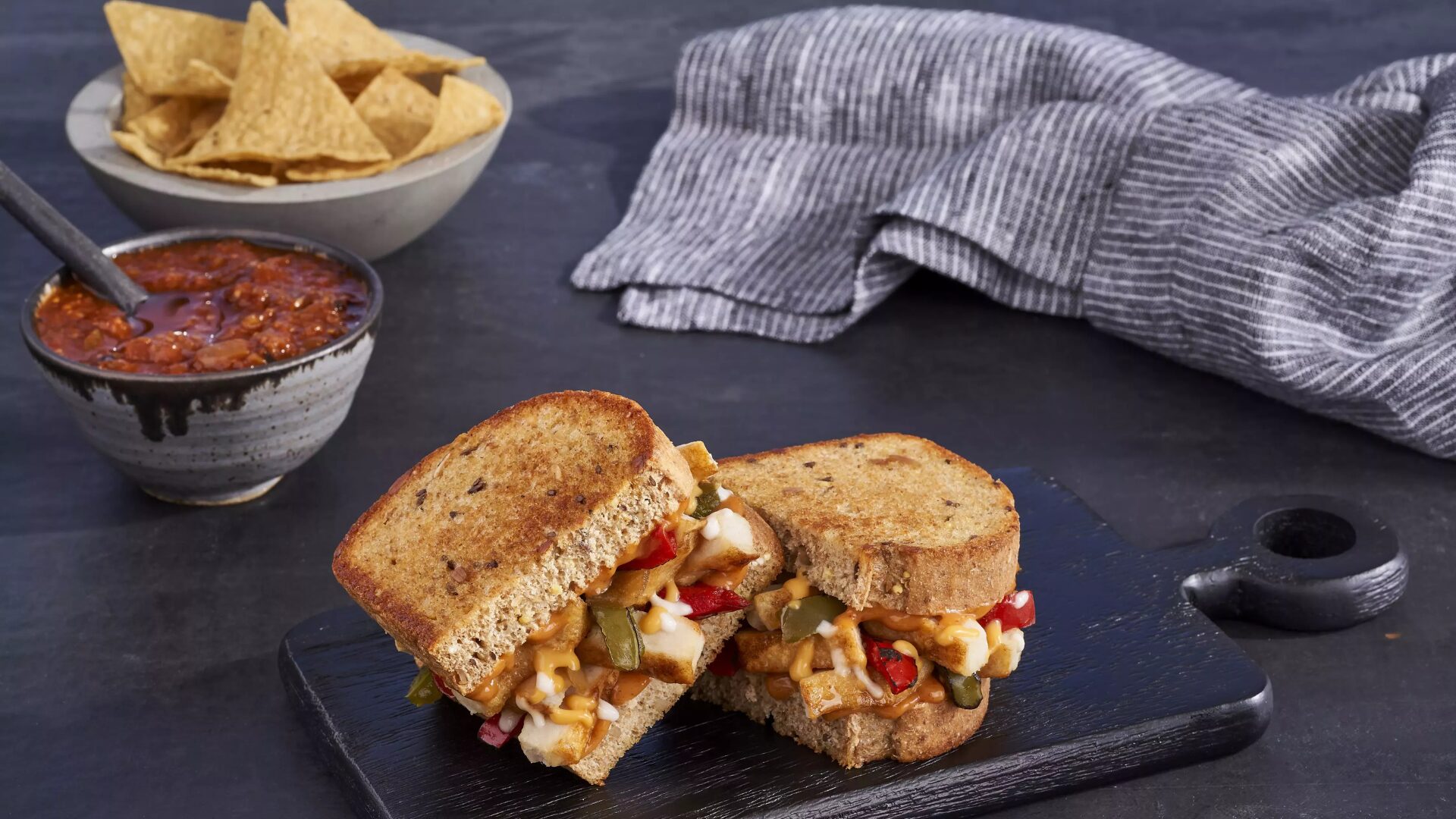Hot honey is back. The question is, did it ever leave?
Helping prompt this question is Pizza Hut. Pizza Hut has been making a quiet comeback in the QSR market the last few years; it started with its Melts handheld offerings, grew with the return of 90s-era (and sleepover staple) The Big New Yorker pizza, and even hit TikTok hard with its pickle pizza announcement. Now, the Hut is launching a limited-time pizza in Dallas and Cleveland: Hot Honey Pizza and Hot Honey Wings.
Technomic recently reported that hot honey now appears on 5% of all QSR menus, and for good reason: honey is delicious. A verified superfood, honey complements everything from vegetables to waffles, grilled salmon, even cocktails. Honey is a 24/7 hardworking juggernaut whose golden, viscous consistency lends a drop of sweetness to everything it touches and can also be mixed, drizzled, baked, reduced, and Frankensteined into most any dish for a burst of sunny flavor, whether featured atop ice cream or biscuits or embedded into a marinade for chicken, fish, and especially barbecue ribs.
More than anything, honey is a perfect medium in which to add a tantalizing streak of crimson heat. The unique flavor profile of thick, sweet honey coupled with incendiary peppers and/or pepper flavors – from everyday tabletop red pepper to ghost peppers and Carolina reapers – is one of the more simpatico flavor and texture combinations out there. A beaming drizzle of honey dusted with pepper flakes or colored with a blistering streak of Scoville-style heat is as appealing on Instagram, for example, as it is cast against a brilliant white backdrop of a plate or atop the tongue, soaking in the opposing flavors at the nexus of where sweet meets heat.
Breaking Down the Condiment Mashups
“You can put chili honey on everything,” says Jorge Gomez, chef and co-owner of Humble Bistro, an Italian/American fusion restaurant in Arizona.
“The sweetness and the chili behind the balance is elegance,” he notes, describing all the foods hot honey pairs well with – cheese, bread, cured meats, fruits, desserts, and more.
Though the most visible of the condiment mash-up trends, hot honey is far from the only condiment receiving a refresh.
“Consumers’ preference for spice is growing, and is especially dominant for young folks,” says Lizzie Freier, an analyst at Technomic. She says the demand for condiment mashups is growing; “Mentions of hot honey have grown 9.6% on menus over the past year (including 15% in entrees alone), according to Technomic’s Ignite menu data.”
According to Technomic’s 2021 Flavor Consumer Trend Report, very spicy sauces (levels 7-10 on a scale of 1-10, where 10 is extremely spicy) are the most preferred sauces overall. As far as flavor goes, sweet and spicy combinations top the list with 45% of consumers finding it the most appealing next to sweet and sour (44%), sweet and salty (41%), and even sweet and smoky (41%). Even the demand for restaurants offering unique condiment mashups is rising – 36% of consumers want more sweet with the heat and spicy with the sour available at their favorite full-service and quick-service hotspots.
Pizza is the medium where hot honey thrives the most, pioneered by brands like Mike’s Hot Honey and seen in today’s limited-time offerings and even in the frozen section of the grocery store. “We’ve even seen [hot honey] atop loaded fries, burgers, and toast,” Freier said. She also expects hot honey to appear in desserts and even beverages. And why not?
“We want craveable food, and surprises,” Chef Gomez reiterated. “So many restaurants are afraid of using chilis. Be bold! Try what you want. What’s the worst that can happen?”
The Buzz Is Real
Honey is, to put it simply, pretty. There’s a reason it’s a timeless term of endearment. More than that, “hot honey adds zest to food photos and videos,” said Hengam Stanfield, co-owner of Mattenga’s Pizzeria, in Texas. “Food enthusiasts and influencers have made hot honey popular because of its visual appeal.”
She also noted that honey is known for its natural health benefits, including soothing effects on the throat, antibacterial properties (see the factoid called out above), and potential allergy relief, adding to its appeal as a “clean” condiment choice. “In addition to this, the chili peppers which provide heat in hot honey, also contain capsaicin which is known to improve digestion and boost metabolism. These health benefits boost the popularity of hot honey and appeal to chefs, restaurant owners, and food customers.”
Stanfield also added that the prominence of Mike’s Hot Honey has “been instrumental in showcasing the versatility of their product through hundreds of recipes and recipe booklets with gorgeous photography, highlighting its potential uses in savory and sweet dishes and expanding its appeal beyond traditional applications.” And honey is as versatile as it gets – it even rewards vegan/synthetic applications and helps fuel a robust $15 billion pollination market.
The rapid growth of the condiment mash-up – led by hot honey – did not go unnoticed by the world’s largest food company.
“We’ve been following the trend for a few years, and it was important for us to partner with the category leader, Mike’s Hot Honey,” said Aaron Fleisch, senior chef of culinary innovation at Nestle. Combined with the rapid growth of the frozen food sector, Nestle partnered with Mike’s Hot Honey to produce a California Pizza Kitchen-brand hot honey frozen pizza.
“The sweet heat is a perfect pairing with our smokey uncured pepperoni – and when on top of the thin flaky crust, it’s a dream come true.”
The world of the great condiment mashup is nothing new – like so many movies, fresh life is given to old IP when marketed well. Between TikTok, Instagram, and seemingly unlimited commercial mash-ups and tie-ins from Disney 100 cereals from Post Consumer Brands to the neon-hued miasma of products coming to a grocer near you via the Barbie movie, a good mashup is more than just the sum of its (often delicious) parts. Just ask Kraft Heinz, who launched wasabioli (wasabi and garlic aioli), Hanch (hot sauce and ranch), and Tarchup (tartar sauce tartare and ketchup) to mixed but passionate reviews.
If hot honey is a contemporary catalyst for F&B brands, restaurateurs, and at-home cooks to take to their condiment drawers with gusto, the future is decidedly sweet and spicy all at once. Isn’t that the way it should be?
The Food Institute Podcast
What drives consumers in the frozen food sector? According to Red’s All Natural founder Mike Adair, they want both convenience and better-for-you attributes. City National Bank managing director Jennifer Braasch also shares how the frozen food sector has grown despite the pandemic and inflationary pressures.












